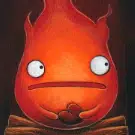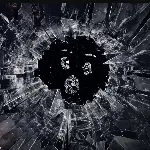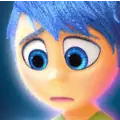Remember when Transformers were all anyone could talk about? Sadly, its latest—and arguably best—film Transformers One lost hope for a sequel before it could even make its mark. But has the franchise really become a relic of the past? Despite poor box office performance, the film shot to the top of trending charts after hitting streaming platforms. Even as you read this article, countless passionate viewers are sharing their love for it with others. The reason is simple: it's good.

Hello Peliplaters!
Do you remember the time when everyone was talking about nothing but Transformers? Its latest (and arguably best) film, Transformers One, never got a chance to make waves before its sequel's production was canceled. But has the franchise really become a relic of the past? Despite poor box office performance, the film shot to the top of trending charts after hitting streaming platforms. Even as you read this article, countless passionate viewers are sharing their love for it with others. The reason is simple: it's good.
A few months ago, I saw Transformers One in theaters and was absolutely thrilled by it, so I urged everyone I knew to watch it too. It's a pure Transformers story with no human characters, just these magnificent alien beings made of steel and powered by electricity. While a story about a futuristic world without human characters might seem difficult to connect with for non-fans, the storytelling is so vivid that I believe it could make even someone who's never seen Transformers dream of becoming one. And that's the key difference: it makes you want to become a Transformer, not just own one—a fundamental distinction from the live-action Transformers movie series.
In 2007, Michael Bay's Transformers swept through theaters worldwide, captivating audiences everywhere and making it the talk of the town. The stunning digital effects and vivid details mesmerized viewers, particularly the scene where AllSpark brought Earth's mechanical equipment to life. This moment sparked imagination, making people wonder what everyday objects could be transformed. For car enthusiasts and commuters stuck in traffic, who could resist Bumblebee, a car that could polish itself, transform to avoid congestion, and crack jokes? As a racing game enthusiast myself, I found myself searching for Bumblebee-inspired paint jobs in every game I played.
The franchise's quality declined after the first film, particularly from the third installment onward. While the visual effects remained serviceable, they lost the meticulous attention to detail that made the original special. The Transformers became secondary characters in their own movies, losing their impressive sense of scale. The producers seemed to believe audiences only craved explosions and clashing metal, leading to uninspired transformation sequences. Meanwhile, human characters dominated screen time with hollow dialogue that mostly alternated between "Can I really save the world?" and "I definitely can save the world!"
Many viewers, familiar with the live-action movies only, may not know that Transformers began as a Hasbro toy line. Young designers developed the brilliant idea of giving car toys the ability to transform into robots. Though innovative, this concept didn't match mainstream expectations—people were more familiar with human-controlled robots like Gundam than autonomous mechanical life forms. This led Hasbro to create the Transformers animated series. While the company aimed to boost toy sales by enriching children's imagination, the animation creators saw an opportunity to create something that could rival Gundam. The series centered on Transformers as a distinct alien civilization with their own coherent culture and worldview. The story worked perfectly without humans, but when human characters appeared, they formed true partnerships with the Transformers, much like the special bond children develop with their beloved toys.
At its core, the story of Transformers is about the power of friendship.
True friendship is built on equality and mutual support. Yet the live-action films undermine this by portraying humans as conspicuously weak, inferior in both technology and strategic thinking. Rather than depicting genuine partnerships, the writers reduced the Transformers to subordinates, forcing them into contracts that demanded unconditional protection of humanity. For such advanced, intelligent beings, this arrangement lacks any sense of equal rights. From the Autobots' perspective, their diplomatic relationship with humans would be nothing short of demeaning.
Investors, production teams, and Hasbro never aligned on their vision for the Transformers franchise. Though the live-action films superficially met stakeholder requirements, their plots were incoherent. Human characters felt redundant, and the Transformers' motivations made little sense. Bay himself expressed reluctance to direct more sequels, knowing a compromised vision wouldn't satisfy any audience. Casual viewers left theaters frustrated by plot holes, while dedicated fans condemned the filmmakers for betraying the essence of the Transformers, which hold the place of a hero in their hearts. After the fifth film's disastrous reception, Transformers: Rise of the Beasts doubled down on misguided choices by introducing an outlandish concept—humans merging with Transformers.
As the Transformers universe grew increasingly chaotic, it devolved into a mishmash of random elements. With Hasbro's limited film expertise and the investors' shallow understanding of the intellectual property, directors avoided the franchise, fans rejected it, and the Transformers became unwanted orphans. Now they live only in collectors' display cases—where they retain their magic, as long as you ignore the series' descent into mediocrity.
Transformers One put everything back on track. The production team understood that only a pure Transformers story could revitalize the franchise. The narrative begins on Cybertron, the Transformers' home planet, focusing on the early lives of Optimus Prime and Megatron before they became legends. In those days, Optimus Prime was known as Orion Pax, while Megatron carried only a designation: D-16. They were simple miners without transformation abilities, slogging away side by side in the low depths of Cybertron. Despite their harsh existence, they forged an unbreakable brotherly bond. These younger versions bore little to no resemblance to their live-action counterparts, both in appearance and character. Orion Pax was an optimist whose mind brimmed with rebellious and creative ideas. He'd always invite D-16 to join his adventures, and though D-16 was naturally more cautious, he never failed to stand by Orion Pax's side.
Without human characters cluttering and interfering with the narrative, the battle sequences achieved a new level of fluidity and intensity. Audiences were treated once again to the pure spectacle of clashing metals in explosive encounters, such as the following scene s:
s:

Despite its excellence, the film failed to meet box office expectations. Perhaps fans were too disillusioned by the live-action films, or they assumed an animated version couldn't match the spectacle of live action, leading many to skip the theatrical release. On November 20, 2024, Hasbro announced it'd stop funding the series directly, allowing external studios to finance future projects independently. While the carefully worded statement didn't completely rule out sequels, the possibility of future installments grows fainter by the day.
Sigh.
Is there a movie God out there? If so, can you hear the pleas of Transformers fans? This story shouldn't end here—not with Transformers One. Though it may not be perfect, it stands as a brilliant new beginning.
















































View replies 0